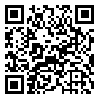Sat, Jan 3, 2026
| فارسی
Volume 17, Issue 3 (Autumn 2015)
Advances in Cognitive Sciences 2015, 17(3): 20-29 |
Back to browse issues page
Download citation:
BibTeX | RIS | EndNote | Medlars | ProCite | Reference Manager | RefWorks
Send citation to:



BibTeX | RIS | EndNote | Medlars | ProCite | Reference Manager | RefWorks
Send citation to:
Niazi L, Nazari M A, Nejati V, Hatami J. Risky Decision-Making for Self and Others in Anxiety State: An Event-Related Potential study. Advances in Cognitive Sciences 2015; 17 (3) :20-29
URL: http://icssjournal.ir/article-1-381-en.html
URL: http://icssjournal.ir/article-1-381-en.html
1- PhD student of cognitive psychology, Institute for Cognitive Science and Brain, Shahid Beheshti University, Tehran,Iran.
2- Associate Professor, department of Psychology, cognitive neuroscience laboratory, University of Tabriz, Tabriz,Iran.
3- Associate Professor, Department of Cognitive Neuroscience (Brain and Cognition), Shahid Beheshti University, Tehran,Iran.
4- Associate Professor, Department of Psychology, Faculty of Psychology and Education, University of Tehran, Tehran,Iran.
2- Associate Professor, department of Psychology, cognitive neuroscience laboratory, University of Tabriz, Tabriz,Iran.
3- Associate Professor, Department of Cognitive Neuroscience (Brain and Cognition), Shahid Beheshti University, Tehran,Iran.
4- Associate Professor, Department of Psychology, Faculty of Psychology and Education, University of Tehran, Tehran,Iran.
Abstract: (3590 Views)
Introduction: Previous investigations have indicated that low amplitude of feedback-related negativity (FRN) in response to negative feedback is associated with high-trait anxiety. The present research attempted to study the amplitude of FRN upon decision-making for self and other in risky situations (comprising self-win, other-win, self-loss, other-loss conditions) in individuals who demonstrate low- and high-trait anxiety.
Method: The Spielberger’s state-trait anxiety inventory was used to screen 260 students. Based on the cut-off values, 21 individuals with low- and high- trait anxiety (11 and 10 subjects, respectively) were enrolled in the gambling task with their EEG being concurrently recorded. The current study used a new version of gambling task in which participants were instructed to choose from two options (small/losses or large/wins). Accordingly, each choice was followed by a feedback indicating relevance to self or others.
Result: Our findings suggested that in low-anxiety group, only loss and win had significant effects on FRN amplitude, whereas in high-anxiety group, the interaction effect of win-loss and self-others was found to be significant. On the other hand, individuals with high anxiety were found to be sensitive to loss of others while individuals with low anxiety were only sensitive to the loss condition (either self or other).
Conclusion: individuals with high-anxiety are biased in processing of the social context. These findings would suggest changes in therapeutic approaches to alter attention bias in anxious patient in stimulus perception stage and would emphasize on modifying the interpretation of others as a potential threat in social situations
Method: The Spielberger’s state-trait anxiety inventory was used to screen 260 students. Based on the cut-off values, 21 individuals with low- and high- trait anxiety (11 and 10 subjects, respectively) were enrolled in the gambling task with their EEG being concurrently recorded. The current study used a new version of gambling task in which participants were instructed to choose from two options (small/losses or large/wins). Accordingly, each choice was followed by a feedback indicating relevance to self or others.
Result: Our findings suggested that in low-anxiety group, only loss and win had significant effects on FRN amplitude, whereas in high-anxiety group, the interaction effect of win-loss and self-others was found to be significant. On the other hand, individuals with high anxiety were found to be sensitive to loss of others while individuals with low anxiety were only sensitive to the loss condition (either self or other).
Conclusion: individuals with high-anxiety are biased in processing of the social context. These findings would suggest changes in therapeutic approaches to alter attention bias in anxious patient in stimulus perception stage and would emphasize on modifying the interpretation of others as a potential threat in social situations
Type of Study: Research |
Subject:
Special
Received: 2015/05/22 | Accepted: 2015/07/23 | Published: 2015/09/23
Received: 2015/05/22 | Accepted: 2015/07/23 | Published: 2015/09/23
| Rights and permissions | |
 |
This work is licensed under a Creative Commons Attribution-NonCommercial 4.0 International License. |



